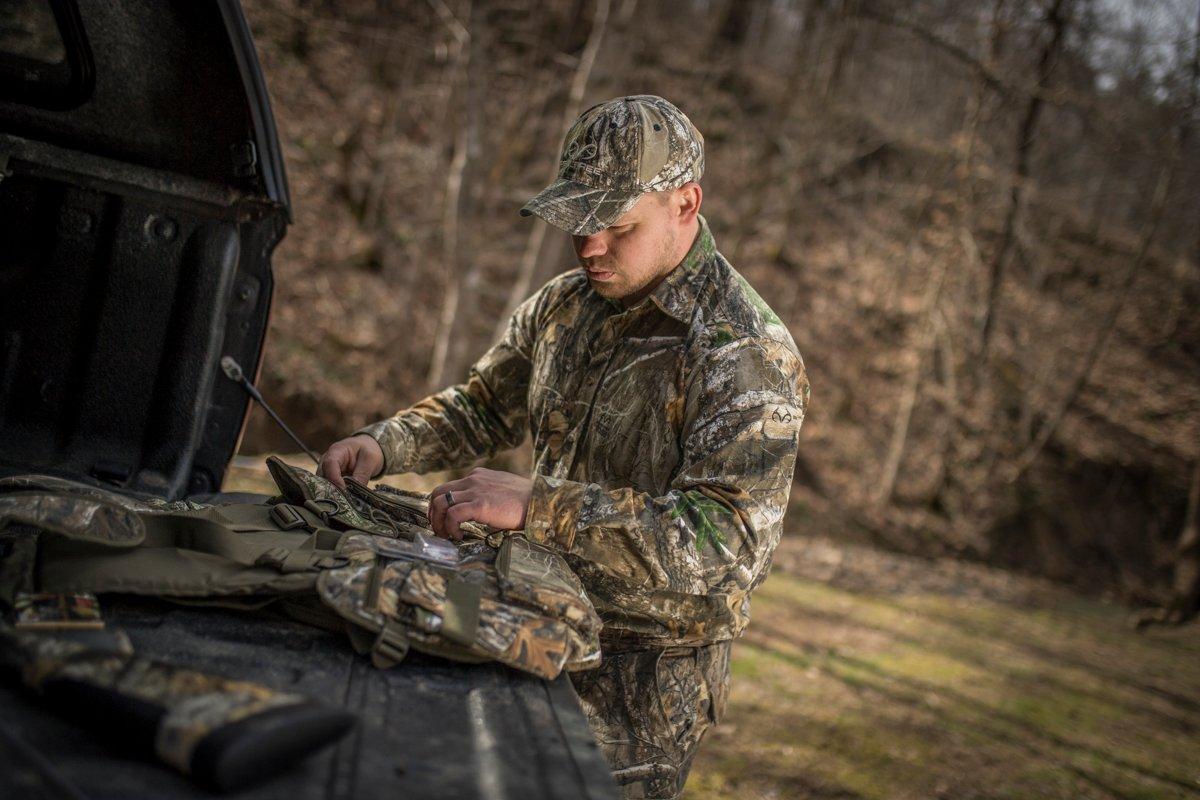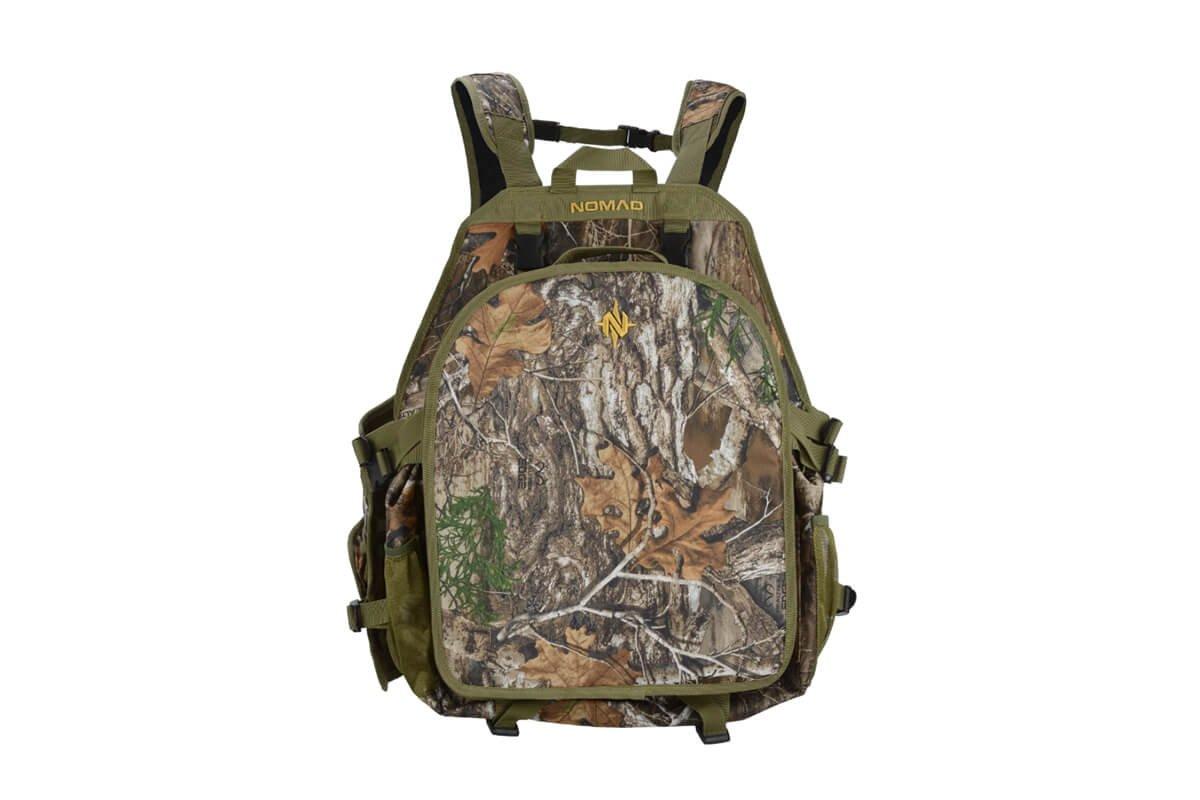A veteran hunter's opinion on what to carry this spring gobbler season
Don't skimp. Don't wander out there short of all the stuff you need to kill a bird. You'll want a good turkey vest with lots of pockets. You'll fill those pockets with the weight of your gear and hopes for success.
Your tools for that day's hunt might be simple, say some calls, ammo and other gear. But the hardcore turkey hunter really can't have enough vests - some for running-and-gunning; some for long sits. A dozen turkey vests hang down in my basement, ready for action. A handful more rest semi-retired in my camo closet, a little dirt- and blood-stained, holding a spent shotgun hull or two and ripe with nostalgia.
Turkey vests are really that important to me.
And if I'm sitting around a turkey camp after a morning's hunt, enjoying a never-tasted-better bacon, lettuce and tomato sandwich with you, here's what I'd say if the subject of what to carry on a turkey hunt came up.
What a Vest Needs
In my humble opinion, after decades of getting after turkeys, no single vest provides everything I need. No vest can. I hunt too many states, in too many different situations, under too many different conditions. And I'm not complaining. But here's what I try to tick off the list when choosing a vest for the day's hunt:
Pockets: Give me pockets, inside the vest and outside. I wants lots of them in all sizes, some mesh, some closed in full fabric. I want those sizes to be right. And ideally, I want my pockets to have zippers.
In my experience, box-call pockets are often designed a shade too small, okay for short boxes but not the custom long boxes I like to stroke. My solution is to wrap long box calls in a tie-off, slip-in box call holder, then put it into my vest's game pocket. The worry here is I have to remember it's in there, or I'll smash it setting up too fast against a bull pine. Call holsters that strap to your vest (or belt) can help.
Pot call pockets also seem too small for my friction calls at times. For pots, I usually slip these inside the zippered mesh pockets found in turkey vests, along with my strikers. And I use those designated "pot call" pockets for something else, like truck keys.
Game Pouches: As with the call pockets, some game pouches are too small to carry a 20-pound gobbler several miles out of the big timber. Others, the best of the vests, snap in tight and expand out nicely. These are the ones you want to look for. And yeah, the classic look of a guy carrying a longbeard over the shoulder is cool (um, like me at the top of this page), but not all that safe on public land. Slip your bird into the back of your vest's deep game pouch and enjoy that weight of success on your back. And don't buy the vest if it shorts you in this area.
Seat Cushion: Does it have a reliable, comfortable seat cushion? It's amazing how fast a turkey hunt can go south during an uncomfortable sit-down setup without a good cushion. Yep, you can throw a strapped version over your shoulder, no problem. But the flip-down versions can't be beat. The magnetic flip-ups on some of the Ol' Tom models (see our previewed product at the end of this post) are flat-out great.
Flip-Down Seat Frame: I'm a big fan when I need one, but only for long sits. And hung-up gobblers. Sometimes these elaborate chair-like frames can hinder your stealth moves. So again, I choose the vest based on the day's hunt. Turkeys have their own agendas. But say I'm planning on slipping in on roosted birds an hour earlier than usual. I'm gonna sit comfortably in one of these things.
Durability: I have had some amazing turkey vests over the years; some that I've sadly had to retire. Some of the best last just one spring season, three months of shelf life, that's it. And that's probably good for the economy, so I'll stop my whining. Seriously though, a good turkey vest will hold up under the strain of carrying hefty longbeards, crawling over and under barbed wire, sitting with your back against broad-trunked trees ... well, you get the idea.
Hot and Cold: Some thicker vests actually add warmth during spring's ill-mannered weather trends. Others are so light you can wear them over a long-sleeved camo shirt in late season and still carry your gear. Again, back to my theme here: buy several vests.
[New RealtreeCamo Men's Apparel]
What I Carry
When I hit the turkey woods, my vests often hold the following gear items (in no particular order):
- Ammo. Odd number for luck: 5, 7, 9. Just because. We turkey hunters are superstitious.
- Turkey calls. Mouth and friction. Short box, long box, several diaphragms, a slate pot and peg, maybe a crystal or glass surface, scratchers ... a crow call for locating birds (I owl with my voice).
- A cell phone clicked to airplane mode. For safety. Not communicating just yet.
- A flashlight for early starts and late departures. Make mine as small as possible.
- Sunglasses.
- A mesh facemask and a spare one.
- Camouflaged gloves and an extra pair.
- Roll-up raingear stashed deep at the bottom of my game pouch.
- A mid-morning snack, including water.
- A pocket knife.
- My wallet, license, permits, twist-ties for leg tags (in one zippered pocket).
- Reading glasses (you'll get old, too).
- Pruning shears.
- Small binoculars/monoculars.
- A small phone tripod for hero shots deep in the woods.
- Folded-up topo maps in case my phone, once turned back on, has no signal.
- A change of socks.
- Toilet paper.
Optional carries outside your vest are decoys and fold-up blinds. And, when appropriate, a honey-baked gift ham for the farmer's family after you've killed one of their wild turkeys.
[More Realtree turkey hunting.]









